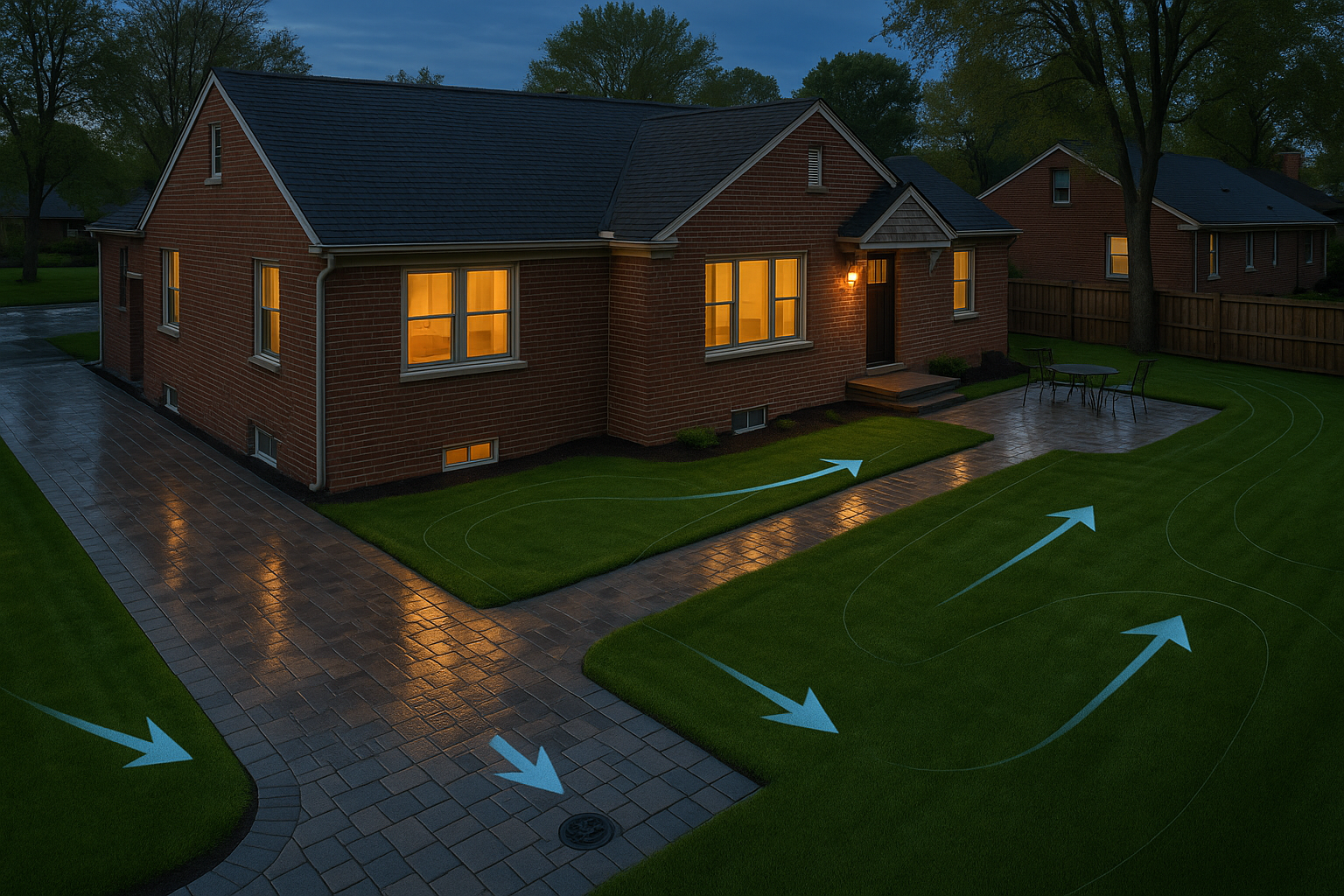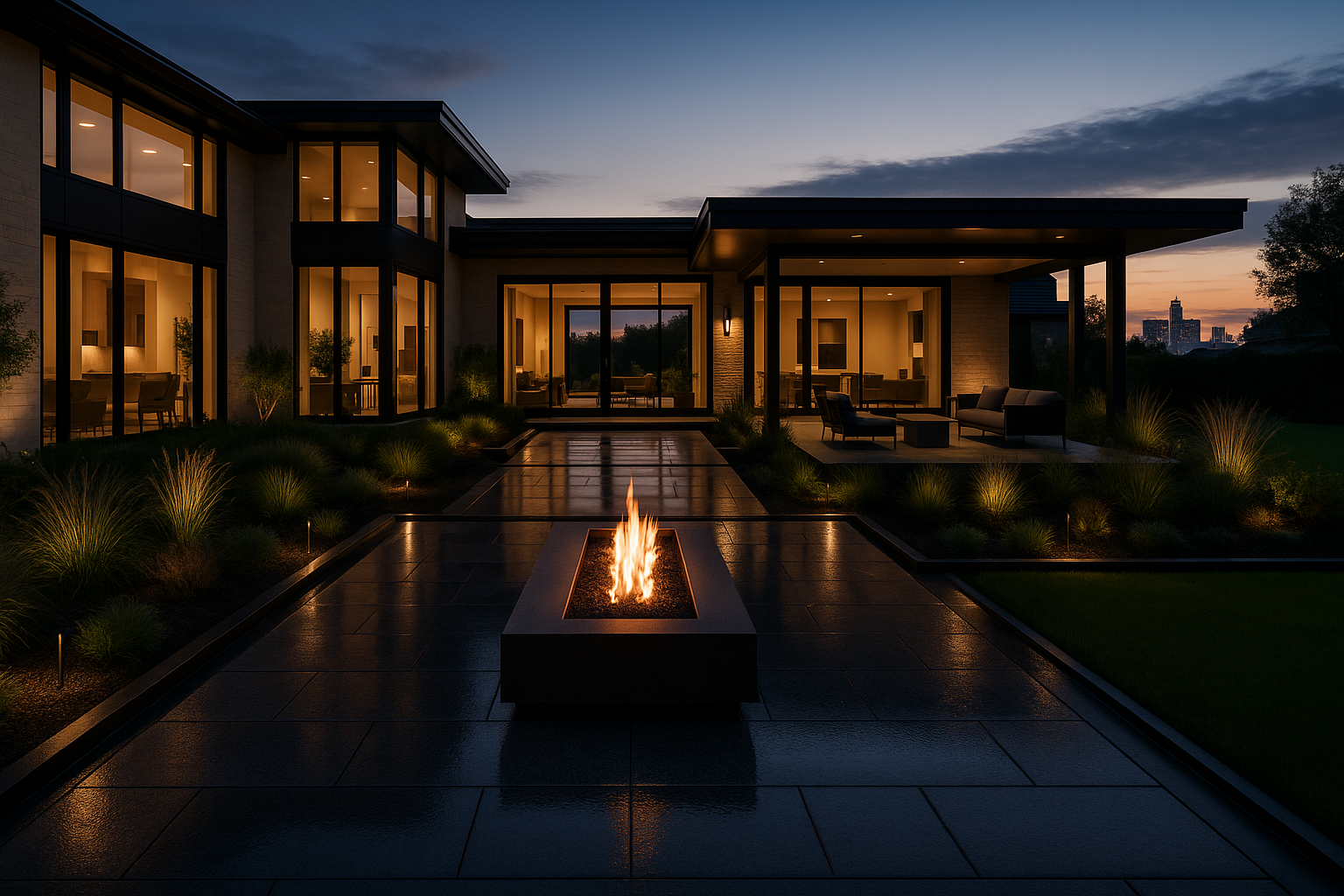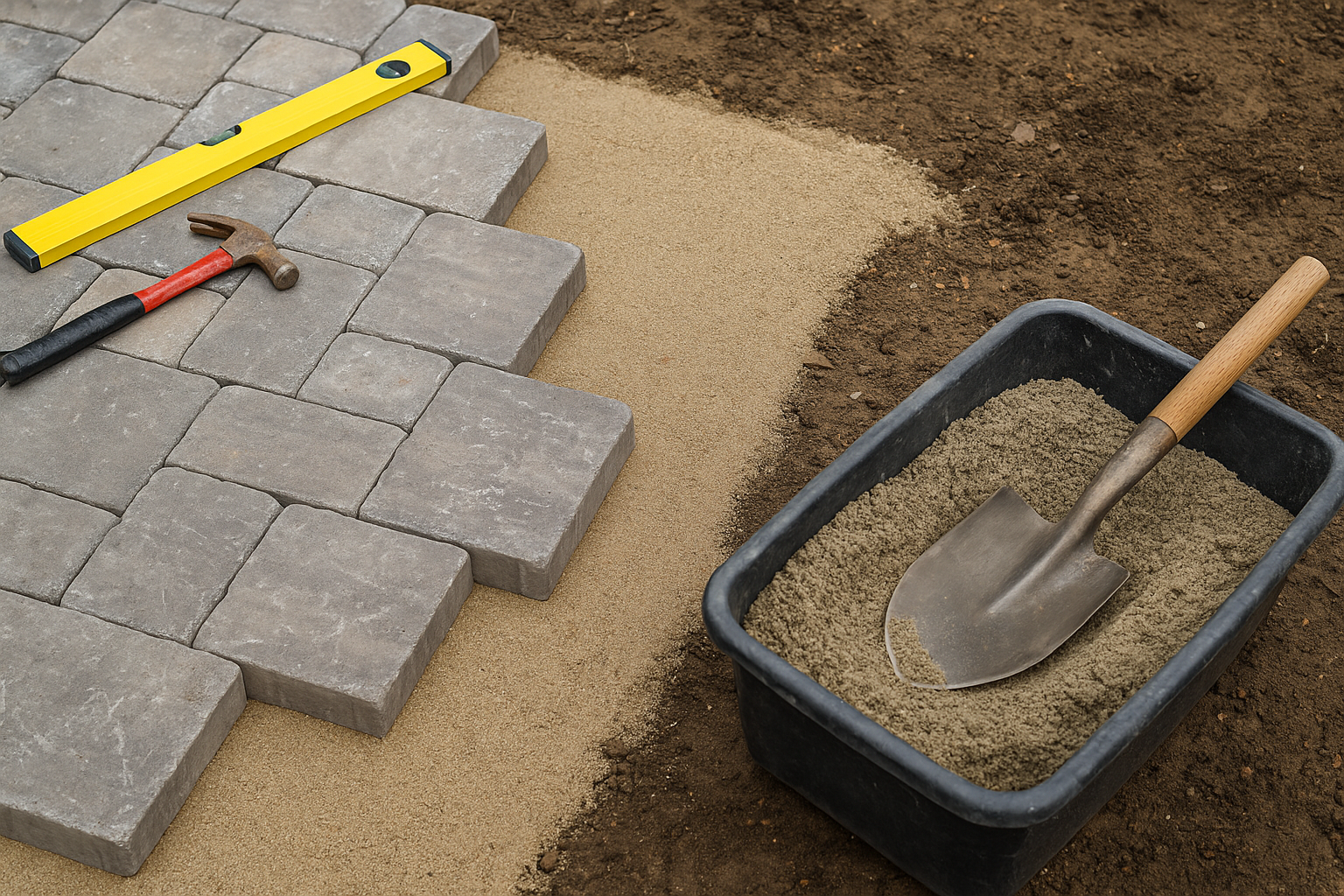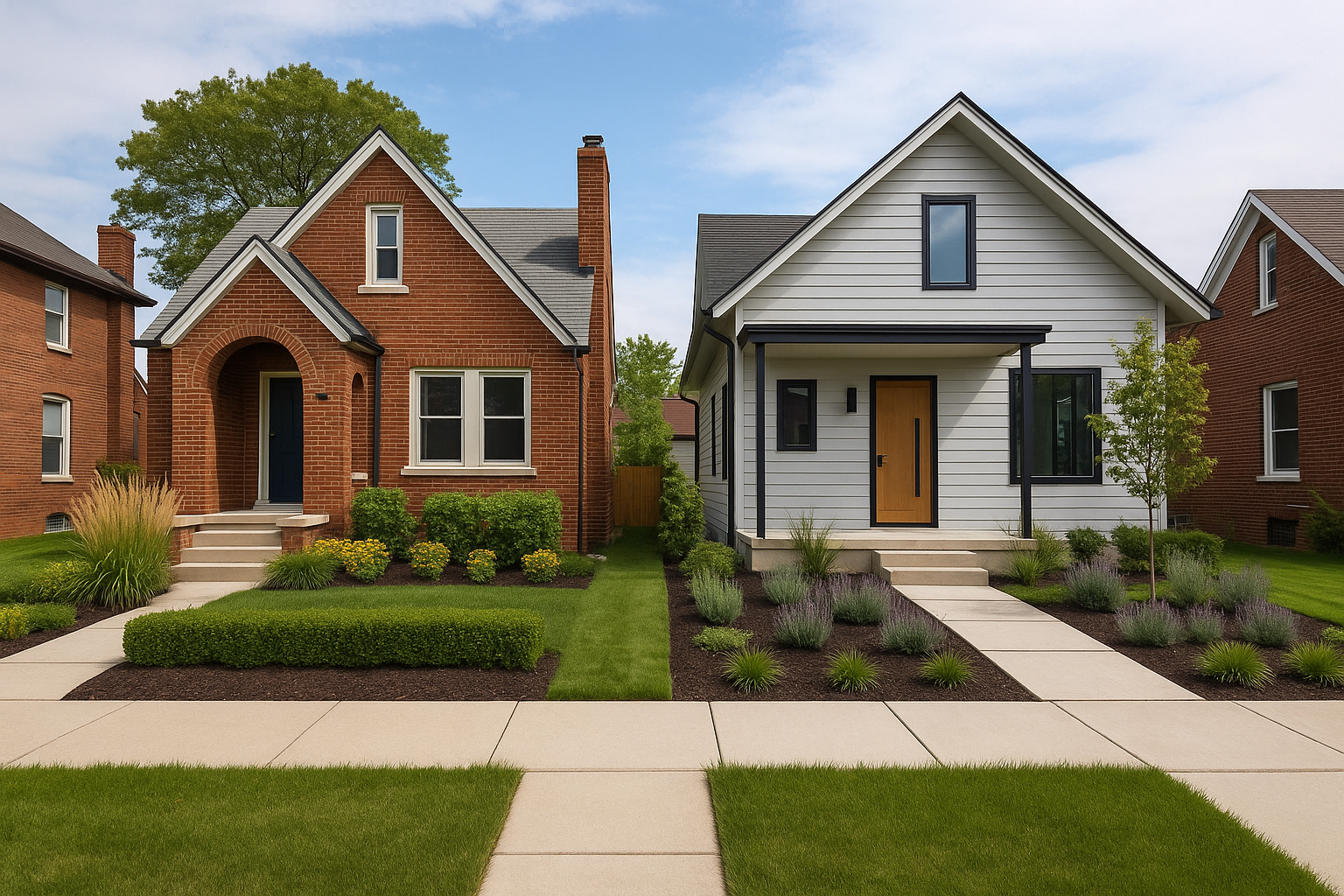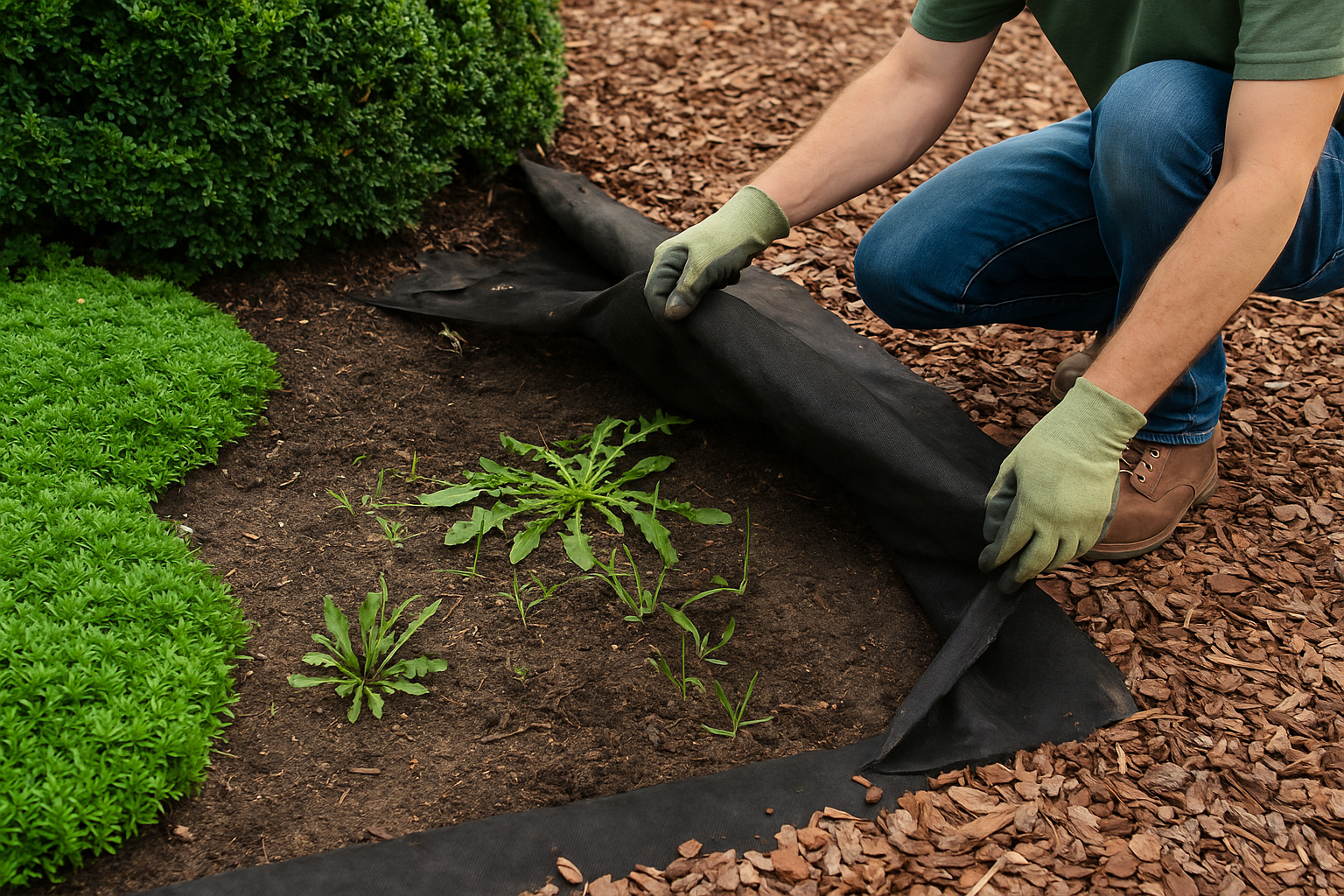Brick by Brick: Why Paver Driveways & Stone Walkways Are a Smart Investment
Brick by Brick: Why Paver Driveways & Stone Walkways Are a Smart Investment
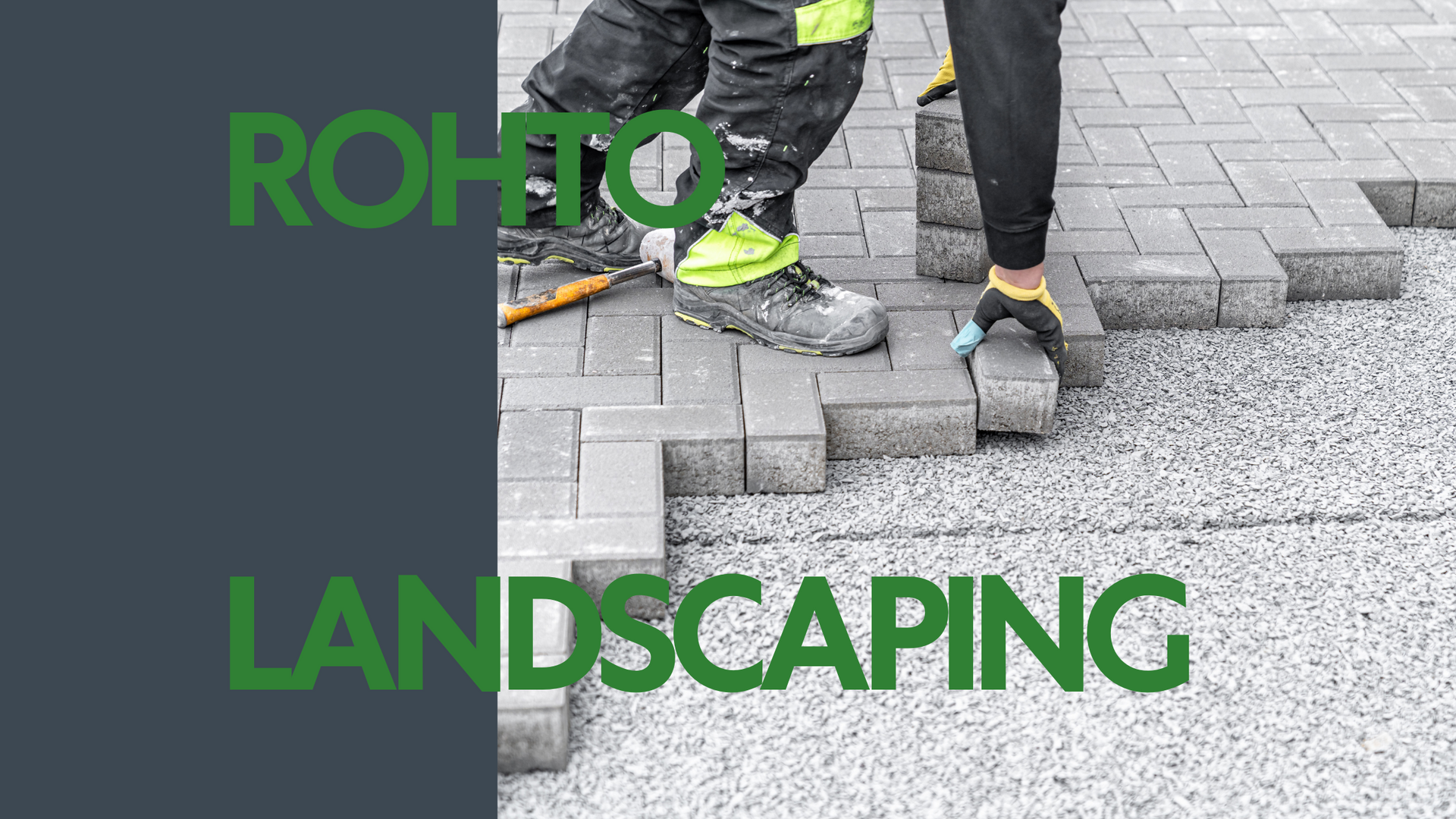
The Basics — What Are Paver Driveways & Stone Walkways?
Let’s be honest—most people don’t think twice about their driveways or walkways until they start cracking or turning into an eyesore. I used to be one of those people. Concrete slab? Fine. Dirt path? It'll do. But once you see what a well-done paver driveway or stone walkway can do for a home, it's hard to unsee it. These are the unsung heroes of curb appeal, quietly boosting property value, safety, and the overall look and feel of your space.
The truth is, what’s under your feet shapes the entire vibe of your home. Functional? Sure. But also beautiful, intentional, and lasting. This first part of the series is all about the foundation—understanding exactly what paver driveways and stone walkways are and why they're worth investing in.
What Is a Paver Driveway?
A Modern Upgrade to the Traditional Driveway
A paver driveway is made from individual units, typically laid in interlocking patterns over a solid base. Unlike poured concrete, which is a single continuous surface, pavers are modular—think of it like a jigsaw puzzle made of stone.
Materials & Styles
Pavers come in a variety of materials: concrete, clay brick, natural stone (like granite or travertine), and even permeable options for eco-conscious homeowners. Each has its own texture, color palette, and finish. One of my favorite things about brick paver patios and driveways is the endless possibility for patterns—herringbone, basketweave, running bond—each one adds personality and polish.
Why Choose Pavers Over Concrete or Asphalt?
I get this question a lot. Poured concrete and asphalt might seem simpler or cheaper upfront, but they come with long-term headaches: cracks, staining, and very limited aesthetic flexibility. Pavers, on the other hand, offer superior durability. If one cracks, you replace that one—not the whole surface. Plus, they can last 30+ years with proper care.
Best Applications
We see paver driveways most often in residential landscaping projects where the homeowner wants a blend of function and design. They’re perfect for traditional homes, contemporary builds, and everything in between. And when installed by an experienced landscape construction company, the transformation is night and day.
Understanding Stone Walkways
Natural vs. Manufactured Stone
Now let’s talk about stone walkways. These are the little pathways that invite guests in, guide you through a garden, or create soft transitions between different outdoor zones. There’s a charm in a flagstone path winding through a flower bed that’s hard to beat.
Natural stone options include flagstone, slate, bluestone, and granite—all of which offer rugged texture and unique coloring. Manufactured stones can mimic the look of natural rock but are more consistent in size and shape, which can make installation faster.
Popular Design Styles
From clean, geometric lines to organic, rustic layouts, there’s a design style for every aesthetic. You might see:
- Stepping stone paths set in grass or gravel
- Mortared flagstone walkways for a more permanent look
- Formal brick-bordered stone paths for symmetry and polish
When we work on hardscape design projects, walkways are always one of the most creative and personal elements.
Ideal Locations
We typically install stone walkways around front entries, between the driveway and porch, leading to backyard patios, or meandering through garden beds. They're a great way to define space without hard walls and help tie different parts of the landscape together.
Aesthetic Impact and Design Versatility
Let’s be real—first impressions matter. Driveways and walkways aren’t just surfaces, they’re experiences. A crumbling concrete slab says, "we'll fix that later." A well-installed custom patio and matching walkway? That says, "someone cares about this space."
With patio construction becoming more design-driven, homeowners want a seamless visual flow from the front curb to the backyard. Materials, patterns, and color schemes can all be customized to complement your home’s architecture and landscaping features.
A well-thought-out hardscape can also spotlight other parts of your yard: it frames garden landscaping, directs traffic, and creates visual balance.
Debunking Common Misconceptions
Let’s bust a few myths.
“Pavers are too expensive.” Sure, the initial cost might be higher than gravel or concrete, but what you get in return is longevity, aesthetics, and lower maintenance. And according to the National Association of REALTORS®, hardscaping like brick paver patios can yield ROI upwards of 60%-70% on resale value.
“Stone walkways shift and crack.” Only if they’re poorly installed. A proper hardscape installation includes compacted base layers, edge restraints, and correct spacing. Done right, they stay solid.
“Gravel works just as well.” Gravel is fine for casual paths or utility areas, but it can't match the beauty or functionality of stone. It's loose, uneven, and difficult to maintain—especially in high-traffic areas.
When homeowners invest in their outdoor spaces, they’re not just making it pretty. They’re making it practical. And that balance is what we love delivering at Rohto Landscaping.
Built to Last — Performance, Durability & Return on Investment
Why Material Matters
When it comes to outdoor surfaces, not all materials are created equal. Homeowners often default to poured concrete or asphalt because it's common or what they've always had. But as a landscape company, we've seen firsthand how choosing the right materials—like paver driveways and stone walkways—makes a significant difference in performance and appearance.
Poured concrete can crack with minimal ground movement. Gravel can wash away with a good rain. Pavers? They flex, adapt, and hold up. That flexibility is a game changer in areas with fluctuating weather.
And here's the kicker: even the best material will fail without proper installation. That's why working with an experienced landscape construction company matters. A poor base layer or skipped compaction process can turn a beautiful driveway into a wavy mess in just a year.
Durability & Longevity
You want your outdoor space to last, right? That's where hardscape installation makes or breaks the outcome. Pavers are designed to outlast nearly every alternative surface. They can last 30 to 40 years when installed correctly, outliving poured concrete and far surpassing the lifespan of asphalt.
They also don’t crack in the same way slabs do. Instead of one large surface under tension, pavers are individual units. If one gets damaged, it's as easy as lifting it and replacing it. No jackhammers. No patchwork.
Brick paver patios follow the same principle. Durable. Repairable. Reliable. That kind of simplicity saves money down the line and keeps your property looking fresh.
Weather-Resistant Design
Living in Michigan, we’re no strangers to extreme seasons. Freeze, thaw, repeat. That cycle is a driveway's worst enemy. Concrete tends to crack under pressure from expanding ice, while pavers adjust and reset without breaking.
Paver driveways and stone walkways also excel when it comes to drainage. Their jointed design allows water to pass through instead of pooling, reducing ice formation and erosion. Plus, they're naturally slip-resistant—a major plus if you have kids running around or guests visiting in the rain.
Near pools or water features, we always recommend custom patios and walkways made with textured or non-slip surfaces. It's one of those small touches that makes a huge difference.
Low Maintenance and Easy Repairs
Pavers are the low-maintenance friend of the outdoor design world. A quick sweep here. A rinse there. Maybe reseal every few years, depending on use. Compare that to power washing concrete or replacing gravel annually, and it's an obvious win.
Weeds? Rare, especially if polymeric sand is used in the joints during patio construction. Settling? If the base is done right (which we do), you might not see any. But if you do, it's an easy fix.
It's also worth noting that color in pavers is baked in, not just surface-applied. That means they won't fade like stained concrete or crack like asphalt.
Energy Efficiency and Environmental Value
You might not think of your residential landscaping as an opportunity to be eco-friendly, but it absolutely can be.
Permeable pavers reduce stormwater runoff, filtering rain through sand and gravel instead of sending it rushing into storm drains. That helps reduce erosion and even supports local groundwater. Cities like Chicago and Portland have adopted these practices on public streets. (Source: EPA)
Some pavers are made from recycled materials or sourced sustainably, and they last so long you won’t be tearing them out for decades.
Cost vs. Value: What’s Worth It
Let’s talk numbers.
Concrete driveways typically cost less upfront, averaging $4–10 per square foot. Pavers range from $10–25, depending on material and design. Stone can cost more, especially if you're using premium flagstone or granite.
But what about over time?
Concrete often cracks within 5–10 years and costs hundreds (sometimes thousands) to repair. Pavers last decades and are easy to maintain. Gravel needs yearly top-ups. Asphalt needs sealing.
When clients ask me, "Is it really worth it?" my answer is simple: yes.
When your home looks better, it’s worth more. In fact, professionally done hardscape design can increase property value by 15% or more according to the National Association of Landscape Professionals. (Source: NALP)
And when you sell? Buyers love a landscape company that took the time to get it right.
If you're ready to explore design ideas or pricing, we can walk you through it. Visit Rohto Landscaping's Services page to learn more.
From Idea to Execution — Design, Planning & Installation Essentials
Planning a Paver or Walkway Project
When we start a hardscape installation project, the first thing we look at is the space itself. It’s more than just measuring the area. We evaluate slope, surface water movement, how the space is used, and how it flows with the rest of the yard.
Is it purely functional, like a paver driveway that needs to handle multiple vehicles and snowplows? Or is it something more aesthetic, like stone walkways winding through a garden?
Elevation changes, root systems, and existing structures all influence what’s possible. Poor drainage can ruin even the best design, which is why slope and grading are critical during our prep phase. If water can’t flow properly, you’ll end up with puddles, cracks, and sinking sections down the line.
Many clients come to us unsure whether they need a walkway, a driveway, or a combination of both. That’s where we help break down the best options for their space, usage, and budget.
Designing with Intention
Every great hardscape design starts with purpose. That means picking a pattern that complements the home, choosing colors that match the exterior or roof, and incorporating layout features that feel intuitive.
Some of the most popular paver patterns we use include:
- Herringbone – great for strength in driveways
- Running Bond – simple and clean for walkways
- Ashlar – a more random, natural feel for custom patios
Color choices matter too. Earth tones feel rustic and grounded. Grays and charcoals offer a sleek, modern finish. We help clients consider things like sun exposure, architectural style, and surrounding residential landscaping when making these decisions.
Borders and curves help soften harsh angles and allow transitions to blend better with the environment. And when we layer in other design elements like lighting or planting beds, it turns the whole area into something truly special.
Popular Upgrades and Add-Ons
Let’s talk features. There’s nothing wrong with keeping it simple, but if you want a space that really feels finished, consider one of these:
- Built-in lighting: Integrated into walkways or pavers for nighttime safety and atmosphere.
- Stone garden edging: Defines planting areas and adds texture.
- Connections to patios: Your patio construction doesn’t have to exist on an island. Tie it together with matching walkways.
- Landscape lighting or retaining walls: Elevates the feel and structure of your design.
A lot of our best projects happen when a client starts with just a brick paver patio or a walkway and then realizes how seamless it can be to build it out in phases.
What to Expect From a Professional Installer
Hiring a landscape company to do your pavers or walkways is about more than just getting it done. It’s about getting it done right.
Professional landscape construction companies start with excavation, grading, and a compacted gravel base. Then comes edge restraints, bedding sand, paver layout, jointing sand, and compaction again. It's a precise process—and skipping a step means problems down the line.
DIY projects often struggle with leveling, drainage, and durability. We’ve had to repair too many uneven DIY walkways where the base wasn’t even 2 inches thick.
We also have access to better materials, equipment, and warranties. When you’re sourcing pavers, choosing suppliers with consistent color and size makes a difference—and those relationships are something we’ve built over years.
Timeline and Permit Considerations
Project timelines depend on scale. A simple walkway might take 1–2 days. A large paver driveway can take a week or more, especially if grading and drainage work is involved.
Permits vary depending on your city or county, especially if driveways are involved. Suburban and urban areas usually require some form of approval. We handle all of this for our clients, ensuring inspections are scheduled and codes are met.
Clients should plan to clear space for equipment access and limit traffic in work areas during the install process.
Maintenance Best Practices
You don’t have to baby your hardscapes—but a little care goes a long way.
Fall is a great time to sweep and rinse the surface, removing leaves and debris before winter hits. If you're in a freeze-prone zone, make sure snow shovels have rubber blades to avoid scuffing the surface. And don't use salt unless your installer recommends it (some materials don't like it).
Sealing every 3–5 years helps maintain color and minimize stains. It’s not required, but it definitely helps.
If you see minor settling, re-sanding the joints or lifting a few pavers and re-compacting the base can fix it fast. That’s another reason pavers beat concrete—spot fixes are simple.
Final Thoughts: Beauty That Works for You
When done right, paver driveways, stone walkways, and brick paver patios create an outdoor space that feels as good as it looks. They aren’t just functional—they’re expressive. They tell visitors you care about your home and your environment.
And when you work with a company like ours, we bring everything we’ve learned from years of residential landscaping experience to help you get it right the first time.
Your driveway doesn’t have to be boring. Your walkway doesn’t have to be basic. And your yard? It deserves more than just mulch and good intentions.
Explore all your options with Rohto Landscaping’s hardscape services. We’d love to help you plan your next outdoor upgrade.

